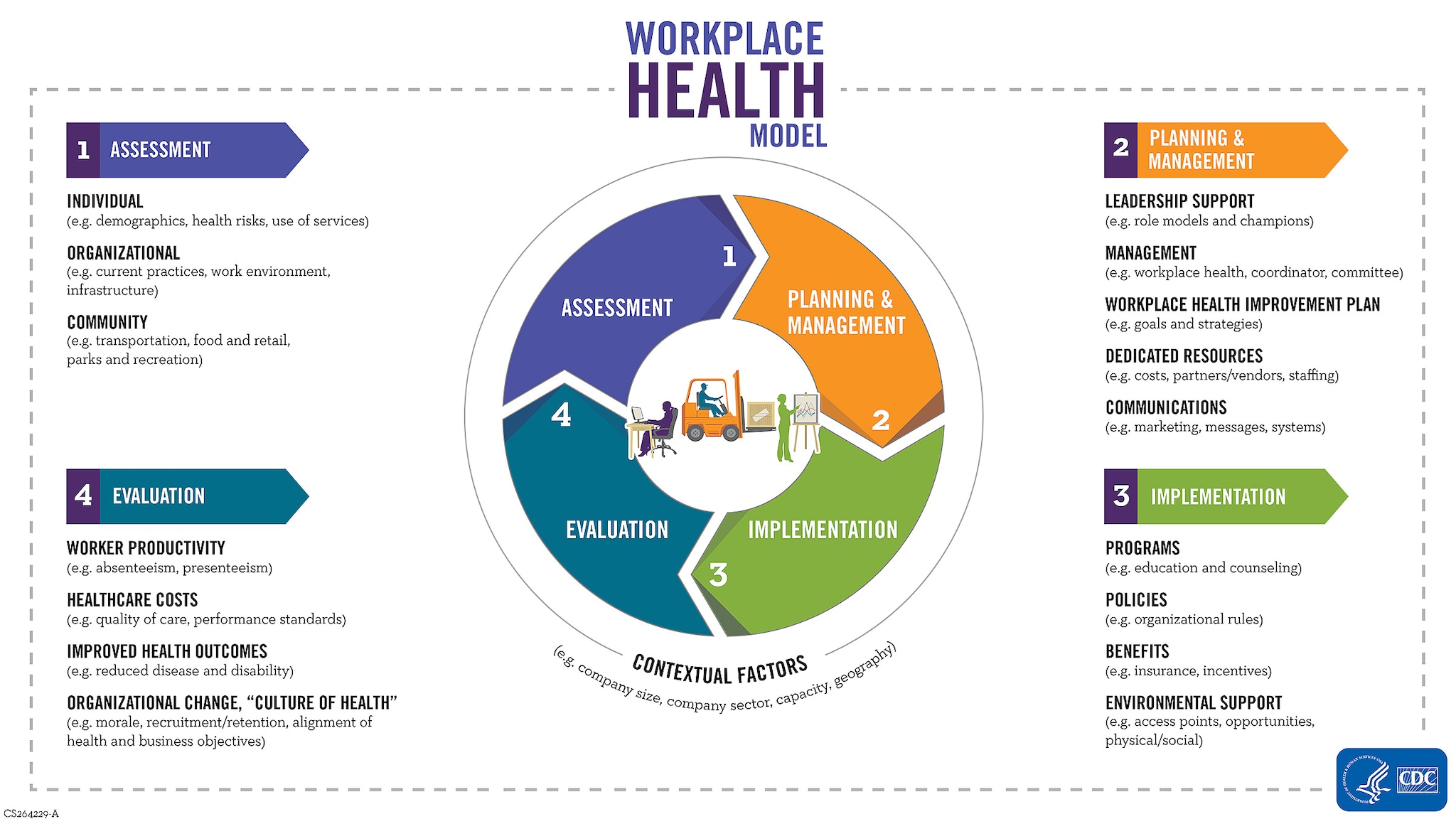Key points
- Effective workplace health programs and policies can improve the quality of life for U.S. workers.
- These programs are more successful when they prioritize worker safety and health.
- Improving workplace health can reduce health risks and improve overall health, making it a strong public health strategy.
Benefits for individuals and organizations
The workplace is a key setting for health protection, promotion, and disease prevention programs, as full-time employees spend a large portion of their day at work. Workplace health programs can lead to positive changes for both individuals and organizations.
For individuals: These programs can improve health behaviors, reduce health risks, and enhance overall health.
For organizations: These programs can lower health care costs, reduce absenteeism, boost productivity, aid in recruitment and retention, and improve workplace culture and employee morale.
Approaches to create a workplace health promotion program

Building a workplace health program
CDC recommends three approaches—coordinated, systematic, and comprehensive—for creating a workplace health promotion program. These approaches can help employers build effective and lasting programs that improve employee well-being and enhance overall health at their organization.
Coordinated approach
A coordinated approach involves a planned and organized set of programs, policies, benefits, and environmental supports designed to meet the health and safety needs of all workers.
Systematic approach
A systematic approach focuses on creating consistent and efficient workplace health programs. This approach ensures that health programs are tailored, effective, and adaptable over time.
Comprehensive approach
A comprehensive approach involves interventions that address multiple risk factors and health conditions at the same time, benefitting both individual workers and the organization.
Workplace health promotion programs are successful when they include both occupational safety and health efforts. Evidence shows that combined approaches to reduce health risks to workers are more effective than separate programs. They can increase participation, effectiveness, and lead to a better work environment.1234
- Sorensen G, Stoddard A, LaMontagne A, et al. A comprehensive worksite cancer prevention intervention: behavior change results from a randomized controlled trial in manufacturing worksites (United States). Cancer Causes Control. 2002;13:493–502. doi:10.1023/a:1016385001695
- Sorensen G, Barbeau EM, Stoddard AM, Hunt MK, Kaphingst K, Wallace L. Promoting behavior change among working-class, multi-ethnic workers: results of the Healthy Directions — Small Business Study. Am J Pub Health. 2005;95(8):1389–1395. doi:10.2105/AJPH.2004.038745
- Hunt MK, Lederman R, Stoddard AM, et al. Process evaluation of an integrated health promotion/occupational health model in Well-Works-2. Health Educ Behav. 2005;32(1):10–26. doi:10.1177/1090198104264216
- Maes S, Verhoeven C, Kittel F, Scholten H. Effects of a Dutch work-site wellness-health program: the Brabantia project. Am J Pub Health. 1998;88:1037–1041. doi:10.2105/ajph.88.7.1037
